Choosing the ideal surfboard for beginners is paramount for a positive and safe learning experience. Key factors include board length (longer for stability, shorter for maneuverability), material (foam for beginners, polyurethan/fiberglass for advanced), tail shape (rounded for stability, pointed for speed), fin setup (center fins for balance, side fins for agility), and water conditions. Select a board tailored to your skill level, body weight, and intended surfing style, emphasizing versatility and ease of use. Proper care and maintenance extend the lifespan and performance of your surfboard.
Looking to dip your toes into the world of surfing? A perfect surfboard is essential for a memorable coastal experience. This guide, tailored for beginners, navigates the journey from understanding your needs to selecting the ideal surfboard. We break down key features, explore different types, and delve into material choices, design considerations, and size selection. Get ready to catch waves with confidence! Discover top picks and care tips, making your surfing debut on the coastline a game-changer.
Understanding Your Needs: Identifying the Right Surfboard for Beginners

When it comes to choosing a surfboard for beginners, understanding your needs is key. The market offers various options, from shortboards to longboards and everything in between, each catering to different styles and skill levels. For newcomers to surfing, it’s advisable to opt for a board that provides stability and ease of manoeuvre. Longer boards, such as 9-foot or 10-foot models, are excellent choices as they offer more floatation, making it easier to catch waves and gain confidence. These longer surfboards allow beginners to focus on learning basic techniques like paddling and catching waves without feeling the need to constantly adjust their balance.
Identifying the right surfboard for beginners involves considering factors like water conditions, personal body weight, and the type of surfing you intend to do. For coastal areas known for consistent waves, a versatile board that performs well in both small and medium swells is ideal. Look for boards with a relaxed rocker (the curve along the board’s deck), which enhances stability and makes it easier to stand up and paddle. Remember, the right surfboard will not only facilitate your learning process but also contribute to a more enjoyable surfing experience.
Key Features of a Beginner-Friendly Surfboard
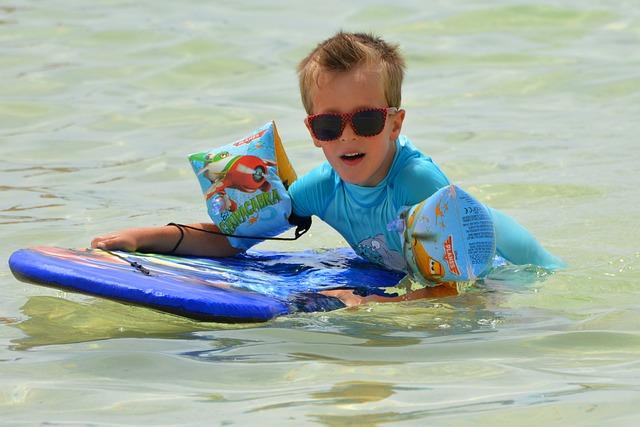
When it comes to choosing a surfboard, especially as a beginner, there are several key features to look out for that will make learning and enjoying the sport much easier. Firstly, consider the board’s size; a longer board provides more stability and is perfect for catching waves with ease, while shorter boards offer greater maneuverability, ideal for those looking to learn tricks faster. Look for a board with a soft or intermediate flex, as this combination of length and flexibility ensures a responsive yet forgiving ride, reducing the risk of injuries during falls.
Additionally, the shape matters; rounded nose (or ‘nose-rider’) boards are great for beginners as they offer better stability and make it easier to stand up. They also tend to be more buoyant, which can help maintain balance. Consider a wider board with a larger volume, as this provides added buoyancy, making it less intimidating for newcomers. Lastly, opt for a board with grippy footpads that provide traction, ensuring you stay put when riding the waves.
Types of Surfboards: Which One is Best for Coastal Surfing?
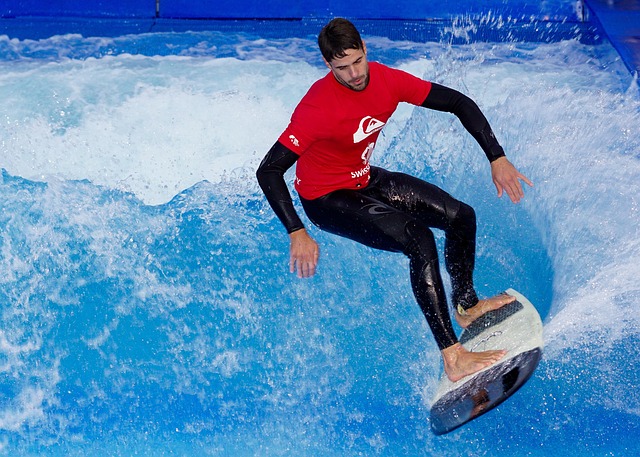
When it comes to choosing a surfboard for coastal surfing, the options can seem overwhelming, especially for beginners. The key is to select a board that suits your skill level and the specific conditions of the waves you’ll be riding.
For novice surfers, a shorter board like a 6-7 foot longboard or a hybrid shape is often recommended. These boards offer stability and are easier to control, making them perfect for learning how to catch waves. Longboards provide excellent buoyancy and glide, enabling beginners to paddle out and practice their turns in the shallower coastal waters. Alternatively, Hybrid surfboards combine elements of both shortboards and longboards, providing a versatile option for various conditions and skill levels.
Material Matters: Choosing Between Foam, Polyurethan, and Fiberglass
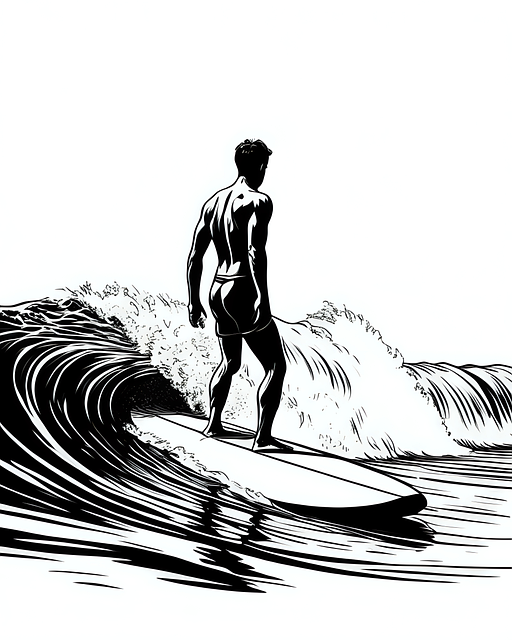
When it comes to choosing a surfboard, especially as a beginner, the material plays a significant role in your surfing experience. Each material has unique characteristics that cater to different skill levels and preferences. For instance, foam boards are lightweight and buoyant, making them ideal for newcomers as they offer easier maneuverability and more stability in the water. These boards are often less expensive and perfect for learning the basics of surfing without breaking the bank.
On the other hand, polyurethan and fiberglass boards provide a stiffer and more responsive ride. Polyurethan is known for its durability and impact resistance, while fiberglass offers speed and agility. Advanced surfers often prefer these materials as they allow for tighter turns and quicker maneuvers. When selecting your first surfboard, considering your skill level, budget, and the local surfing conditions will help guide you towards the best option—whether it’s a forgiving foam board or a high-performance polyurethan/fiberglass design.
Design Considerations: Tail, Rocker, and Fin Setup Explained
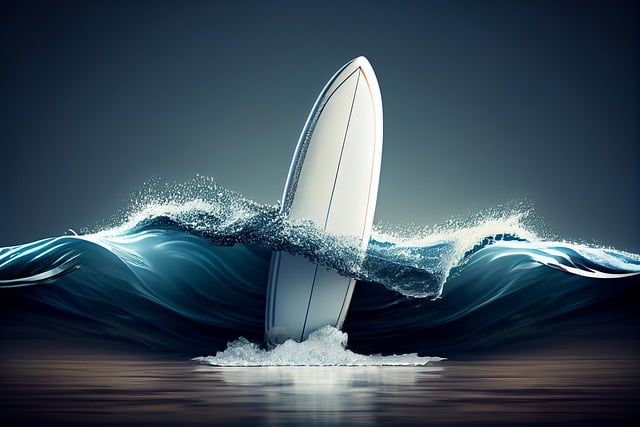
When choosing a surfboard, especially for coastal surfing and beginners, understanding key design elements is essential. The tail shape, or rocker, significantly impacts your board’s performance. A rounded tail provides stability and makes the board easier to turn, ideal for learning waves. In contrast, pointed tails offer higher speed and maneuverability, better suited for more experienced surfers on larger waves.
Fin setup is another crucial consideration. Single-fin setups offer classic, responsive surfing, while tri-fins provide enhanced stability and up-and-down movement, perfect for catching waves consistently. Beginners often prefer a center fin for balance, while advanced surfers may opt for side fins for improved agility.
How to Measure and Select the Perfect Size Surfboard
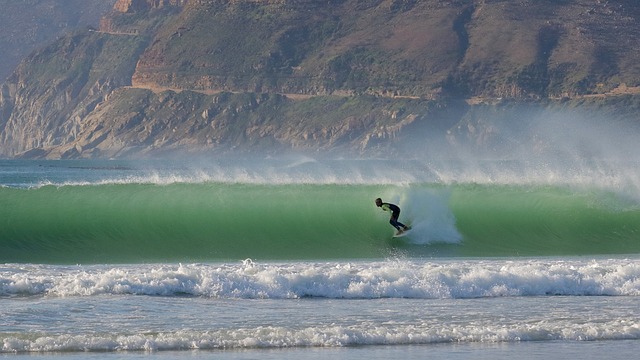
Choosing the right size surfboard is a crucial first step for any aspiring surfer, especially those new to the sport. The ideal board should align with your skill level, body dimensions, and the type of surfing you intend to do. Generally, beginners benefit from longer boards, which offer better stability and make it easier to catch waves.
When measuring, consider your height and weight. A common rule is to select a board that reaches somewhere between your chin and nose when stood on end. For instance, if you’re 5’8″ (173 cm) tall and weigh around 150 lbs (68 kg), a 9-foot (274 cm) board could be a great starting point. Remember, it’s better to err on the side of a slightly longer board, as this will make learning to paddle and catch waves more accessible.
Top Picks for Surfboards Ideal for Coastline Beginners
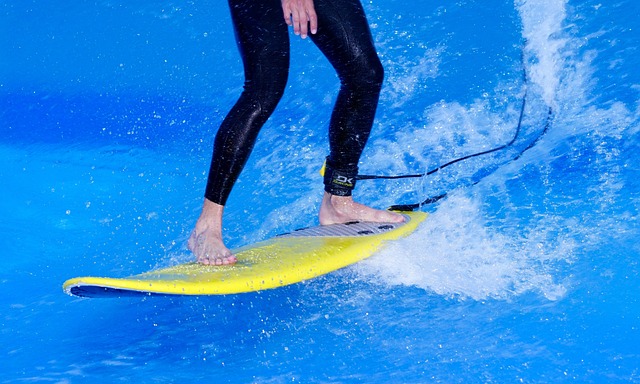
For coastal surfers just starting out, finding the right surfboard is essential for a fun and encouraging learning experience. Look for boards that are designed with beginners in mind, boasting a few key features.
Top picks include shortboards, generally 6-7 feet long, which offer greater maneuverability and ease of use in smaller waves. Their shorter length makes them lighter and easier to handle, ideal for newcomers still developing their balance and paddle power. Additionally, consider boards with rounded pin tails for enhanced stability and smoother turns, ensuring a more enjoyable ride for coastal beginners.
Care and Maintenance Tips for Your New Surfboard

Buying your first surfboard is an exciting step, especially if you’re a beginner looking to conquer coastal waves. To ensure it lasts and performs optimally, proper care and maintenance are essential. Start by rinsing your board with fresh water after each use to remove any salt residue, as saltwater can be corrosive. Regularly clean the board’s surface with mild soap and a soft brush or cloth to keep it in pristine condition.
Storing your surfboard correctly is another crucial aspect. Avoid leaving it exposed to direct sunlight or extreme temperatures. Opt for a cool, dry place, such as an indoor garage or storage unit. If storing it outdoors, use a protective cover to shield it from elements like birds’ droppings and heavy rain. For longer periods of inactivity, consider getting a surfboard bag to keep it safe and compact.
